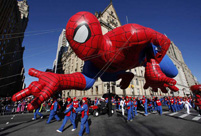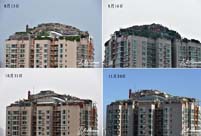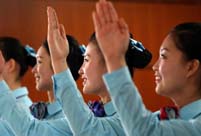Once burned and reviled
In an interview with Shanghai Daily last week, master craftsman Pei Jinbao, who is also a performer, reflected philosophically on the vicissitudes of the guqin's value over time.
"It's a kind of natural law," he says at his home and studio in Suzhou, Jiangsu Province. "So many quqin were burned to ashes (in the cultural revolution, 1966-76). They were worthless then. But things so subdued naturally bounce back."
In those years, guqin was denounced as part of old, decadent culture associated with elite Confucian scholars. As Confucius was repudiated, so was the guqin, said to be his favorite instrument.
"Who would dare to play guqin then?" asks Wu Guangtong, another guqin master. Both Wu and Pei have been honored by the Suzhou municipal government as "inheritors of the art of guqin."
"Whoever played guqin in those years was considered counterrevolutionary," says Wu.
"My father was confined in a cowshed, where he could not play guqin, only practice finger movements in secret."
His father was Wu Zhaoji (1908-97), one of China's eight greatest living guqin players in the 1980s, and founder of the Wu Family of Guqin in Suzhou — a family famously devoted to guqin music and culture.
One day, "red guards" went to senior Wu's home to seize his ancient quqin. The precious instrument, named Yu Ling Long (Exquisite Jade,) would have been burned, had it not been for Wu's quick thinking. He improvised a song in praise of Chairman Mao, convincing the zealots that guqin was not necessarily a pernicious, counterrevolutionary instrument.
Now, Yu Ling Long is worth at least 80 million yuan, says Pei, an expert on repair and appraisal. "By the age of 50, I had examined or repaired over 100 ancient guqin, mostly from the Tang and Ming (1368-1644) dynasties," recalls Pei, who was born in 1954. "Now I have lost count."
Zheng Minzhong (1923-), a senior researcher of cultural relics at the Palace Museum, estimates that there are no more than 20 Tang Dynasty guqin in the world today.
Wu Zhao (1935-), a veteran guqin player and historian, says the Yu Ling Long was possibly made by Li Mian (AD 717-788), a prime minister in the Tang Dynasty.
Three dynasties — Tang, Song and Ming — witnessed the peak of craftsmanship.
Pei was lucky to have bought a Ming guqin in the 1980s, made by famed craftsman Zhu Gongwang (1477-1570). Zhu created a guqin shaped like a banana tree leaf, difficult to produce because of its many exquisite curves.
"Together, Yu Ling Long and my Ming guqin are worth at least 150 million yuan," says Pei. Neither Pei nor Wu would consider selling.


 Heavy cargo flights taking off
Heavy cargo flights taking off In pictures: PLA's digital equipment
In pictures: PLA's digital equipment  Americans mark Thanksgiving Day with parades
Americans mark Thanksgiving Day with parades Self-made farmer billionaire donates 69 villas at hometown
Self-made farmer billionaire donates 69 villas at hometown Demolition of bizarre rooftop villa in Beijing still in progress
Demolition of bizarre rooftop villa in Beijing still in progress Service seminar for E China train attendants
Service seminar for E China train attendants  Supermodel-turned-designer
Supermodel-turned-designer Cheerleaders light up CBA regular season
Cheerleaders light up CBA regular season  Finland--anytime you want is right time to go: Ambassador
Finland--anytime you want is right time to go: Ambassador Youths in Night club: photo story
Youths in Night club: photo story Models dazzle at Int'l Yacht Model Pageant
Models dazzle at Int'l Yacht Model Pageant  How to apply for a green card in China
How to apply for a green card in China Selected sports photos of the week
Selected sports photos of the week Annual Santa Claus parade held in Canada's Montreal
Annual Santa Claus parade held in Canada's Montreal China's aircraft carrier passes through Taiwan Strait
China's aircraft carrier passes through Taiwan StraitDay|Week|Month